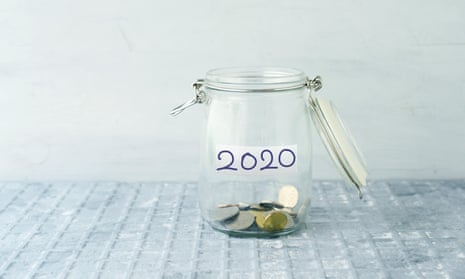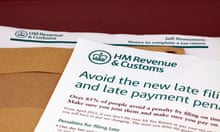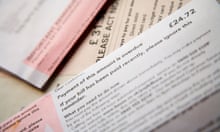Almost 9 million people, many of them among Britain’s poorest, were forced to increase their borrowing last year to cope with the pandemic, according to figures that illustrate the damaging effect of the first two lockdowns on the finances of vulnerable households.
The Office for National Statistics (ONS) found that the proportion of this group borrowing £1,000 or more increased from 35% to 45% since June, and its statisticians are warning of a widening financial gap that is particularly affecting those on low pay, the self-employed and parents with school-age children.
There has also been an impact on saving with 38% of the adult population saying in December they would be unable to save for the year ahead, up from 32% in March.
The ONS figures show that self-employed workers were worst affected by large drops in income, adding further pressure on ministers to broaden the scope of support for the 2-3 million people in self-employment who are not covered by the government’s rescue schemes.
Self-employed people were more likely to report reduced working hours and reduced income, even if they had received support from the self-employment income support scheme (SEISS), the ONS said.
The higher borrowing and lower saving was skewed towards poorer households while better-off groups increased their saving and cut their borrowing.
Gueorguie Vassilev, a researcher at the ONS, said a broad cross-section of society took a financial hit in the first months of the pandemic, either being furloughed or working fewer hours. “What we are seeing now, though, is a widening financial gap between households, where some people are relying on savings or borrowing to make ends meet. Those hardest hit are people on low pay, young people and parents of dependent children.”
Of those people who have not worked during the pandemic, either because they were furloughed or for some other reason, those on the highest incomes were most likely to be paid in full, according to the ONS. More than half (52%) of those in the top fifth of earners were paid in full, compared with only 28% of those in the lowest fifth.
Adding to the growing evidence of income inequality brought on by the pandemic, figures this week from UK Finance showed credit card balances had fallen by 14.7% over the last year, mostly following reductions by higher earners.
Parents with dependent children were almost twice as likely to report a reduction in income in the period of the pandemic to December compared with the general population. This gap gradually narrowed throughout the year as schools reopened and is likely to have widened again during the last few weeks of school closures.
The ONS said parents with school-age children were about 50% more likely to have difficulty meeting their usual expenses than those without. They were also less able to afford either a holiday or an unexpected but necessary expense than other adults.
The consultancy Oxford Economics said ONS figures covering the first weeks of the latest lockdown showed that consumer spending had fallen by more than it did in the November lockdown, but not as much as in March.
Using data for the first time from the Bank of England that tracks credit and debit card payments, the ONS said there was a 35% fall in transactions in the week ending 14 January compared with last February.
“All categories of consumer spending have weakened in the latest lockdown, but the collapse in spending on ‘delayable’ goods, such as clothes and furnishings, has been particularly marked, while ‘social’ spending has been noticeably more resilient than last spring,” the consultancy said.










